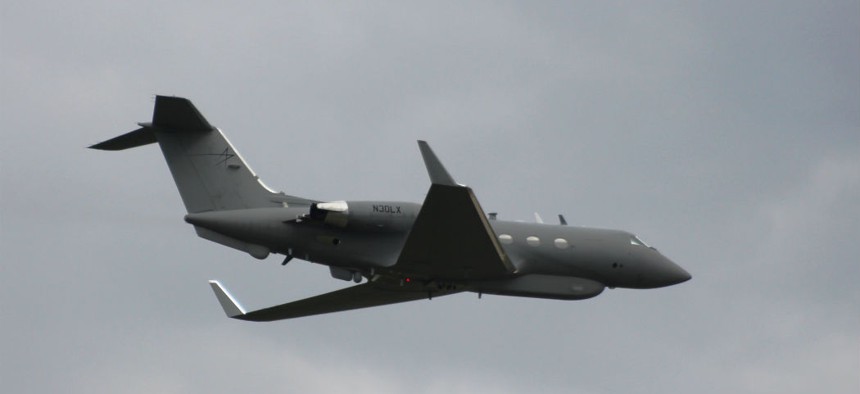
Pentagon evaluates new Lockheed Multi-INT sensor technology
New aerial sensor integration technology allows air crews to view real-time ISR feeds without needing a ground station.
Pentagon weapons developers are analyzing emerging airborne sensor technology designed to fuse and organize data from multiple sources to provide faster and more accurate intelligence information.
Lockheed Martin is testing computer processing improvements to an Airborne Multi-INT Lab (AML) technology which integrates electro-optical sensors with synthetic aperture radar and other kinds of electronic intelligence gathering mechanisms to expedite the delivery of decision-quality intelligence, a company statement said.
The AML system, which has been tested at altitudes from 15,000 feet to 40,000 feet, is currently configured to fly from a Gulfstream business jet; however, in the future, Lockheed plans to work closely with the military services to equip drones and fixed-wing aircraft with the technology.
New computer algorithms can transform raw data into intelligence by connecting disparate types of sensor data. Updates were made to AML’s on-board processing capability to enable this signal intelligence (SIGINT) and communications intelligence (COMINT) technology.
“Think of COMINT capabilities for direction-finding and geolocation and audio,” said Joe Suhr, chief engineer, research and development lead at Lockheed Martin. “The AML now has an autonomous sensor control mode that can coordinate operations between the testbed’s various onboard sensors. This mode allows operators to focus on mission planning and operational issues while detailed execution is handled autonomously,” Suhr explained.
Increasing autonomy of this kind represents continued emergence of artificial intelligence (AI) systems which allow computers to perform procedural functions without needing human intervention at each stage. Developers explain that human cognition is still needed to solve problems and, at times, respond to fast-developing unforeseen circumstances, but machines are now able to use algorithms and processing power to condense, align, organize and display combat-relevant sensor data by themselves.
The enhancement of real-time video coming straight off the sensor allows more efficient consumption of intelligence information. The direct video connectivity permits ISR video to arrive in the aircraft directly without having to first transmit through a ground station, Suhr explained.
The technology not only decreases time of video feed delivery, but also better organizes incoming ISR information, allowing for combined data consumption and improved sensor interoperability.
“Once the radar is on the platform, we can include the sensor system in an operational environment and change detection modes with SAR,” Suhr added.
The interoperable sensors are engineered for cross-cueing to fuse and interpret data streams. Antennas on the aircraft operate in a range of frequencies, to include UHF and other wavelengths other than Ku-band or Common Data Link, Suhr explained.
This kind of integration among otherwise disconnected sensors contains a clear parallel to the technology built into the Pentagon’s F-35 Joint Strike Fighter. Described by operators and developers as sensor fusion, computer algorithms allow for information from a variety of sensors to be organized or fused onto a single screen for pilots to view. Sensor fusion for the F-35 also represents progress in the area of AI as it integrates ISR, targeting, navigation and radar warning receiver information autonomously.
The aircraft’s Distributed Aperture System places a 360-degree camera system around the plane, while the Electro-Optical Targeting Systems finds enemy targets. Information from the two sensors, along with navigational information and data from other avionics are synthesized together for the pilot.
This phenomenon is often referred to as easing the cognitive burden, allowing pilots and aircrews to focus or prioritize attention upon the most significant mission details without having to consistently labor through manual computer processes to maintain aircraft functions and sensor integration.